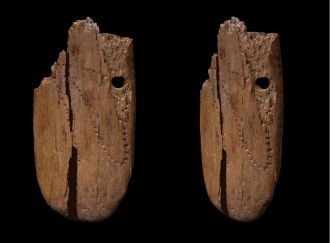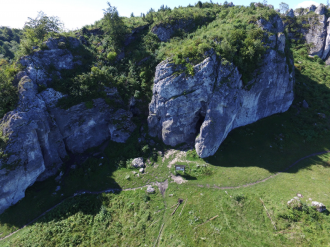Media release
From:
Archaeology: Earliest evidence of humans decorating jewellery in Eurasia *IMAGES*
A decorated, oval-shaped ivory pendant made from mammoth bone, dated to 41,500 years ago, represents the earliest known example of ornate jewellery made by humans in Eurasia, reports a study published in Scientific Reports.
Sahra Talamo and colleagues analysed the pendant, found at the Stajnia Cave, Poland, in 2010 along with a horse-bone tool known as an awl. The authors dated the pendant, awl and bone fragments to the Early Upper Palaeolithic (between 42,000 to 37,000 years ago) through advanced methods of radiocarbon dating, a method for determining the age of an organic sample by measuring the amount of radioactive carbon present. The objects are the earliest known evidence of humans decorating jewellery in Eurasia and the emergence of the symbolic behaviour in human evolution, according to the authors.
The decoration of the pendant included patterns of over 50 puncture marks in an irregular looping curve, and two complete holes. The authors suggest that the pattern of indentations, similar to later jewellery found in Europe, could represent hunting tallies (a mathematical counting system) or lunar notations which correspond to the monthly cycle of the moon or sun.
The authors state that the presence of animal bones alongside the pendant and bone awl may indicate that humans were beginning to produce small and transportable art 41,500 years ago as they spread across Eurasia.
Multimedia





 International
International


